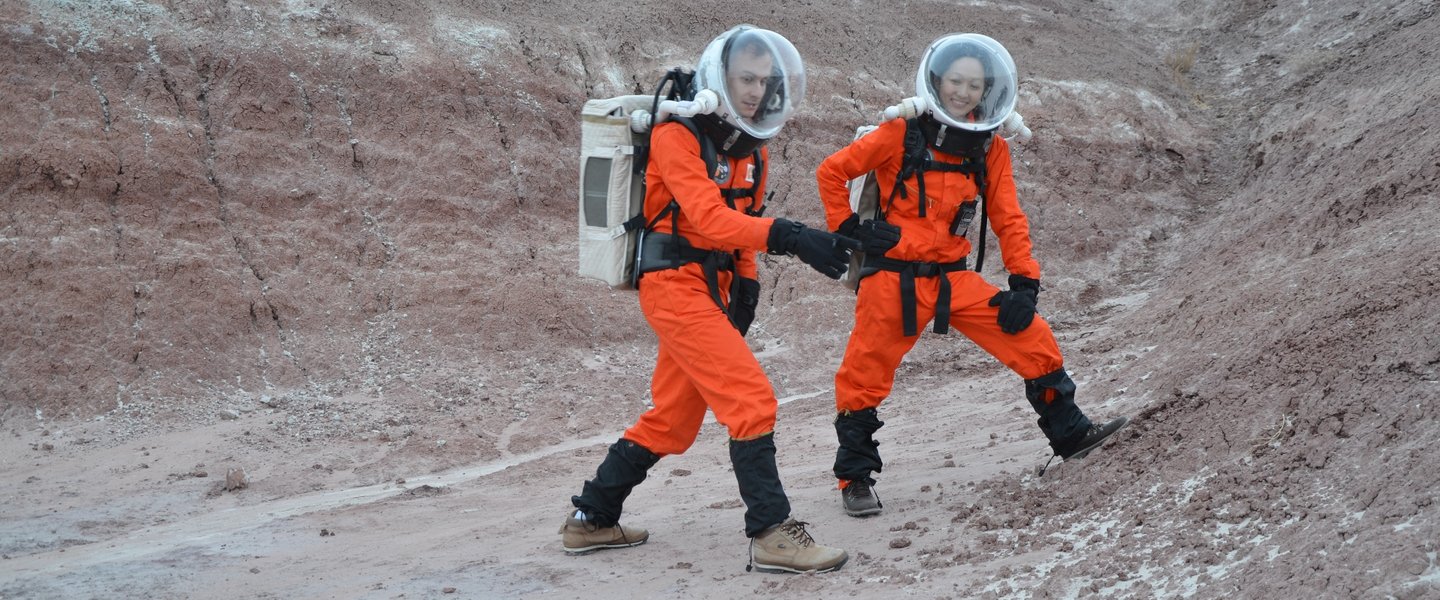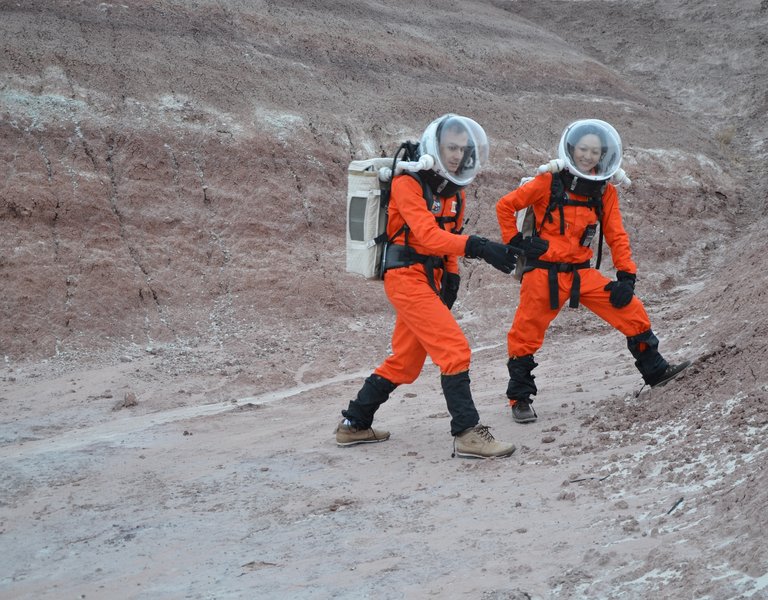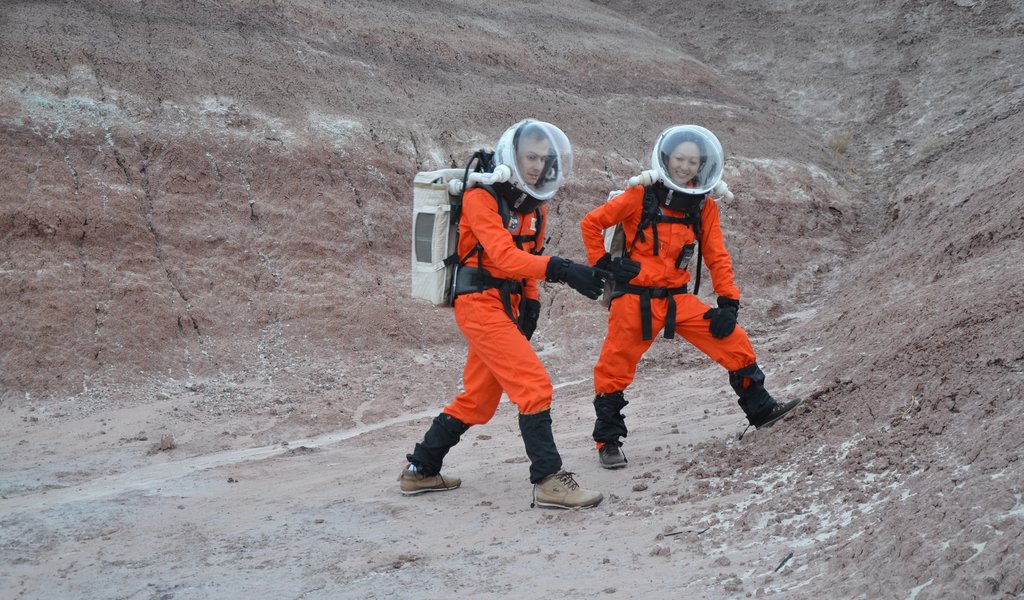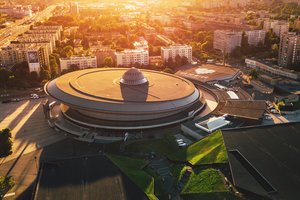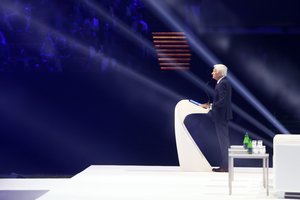A Pole on Mars
What is life like on a Martian base? Michał Czapski, member of Mars Without Borders, who has been taking part in a simulation of life on the Red Planet for the past two weeks of 2014, tells Polska.pl about the project now underway in the Utah desert.
What is life like on a Martian base? Michał Czapski, member of Mars Without Borders, who has been taking part in a simulation of life on the Red Planet for the past two weeks of 2014, tells Polska.pl about the project now underway in the Utah desert.
What is life like on a Martian base? Michał Czapski, member of Mars Without Borders, who has been taking part in a simulation of life on the Red Planet for the past two weeks of 2014, tells Polska.pl about the project now underway in the Utah desert.
Aleksandra Stanisławska, Polska.pl: Are you volunteering to fly to Mars? The name of your organisation does seem to suggest it…
Michał Czapski*: No, I don’t intend to fly to Mars, because it would most likely be a one-way trip. My mission is about something else. Over the last two weeks of 2014, I have been taking part in a simulation at Mars Desert Research Station in the San Rafael desert in Utah, United States. The Mars Society, which promotes the idea of manned flights to the Red Planet, has built a copy of a Martian base there. The base comprises a habitation module, 10 metres in diameter, and a small glasshouse. A small astronomical observatory stands nearby. Everything is organised to reflect the conditions of the base on Mars as much as possible.
What’s it like to live on Mars, then?
It isn’t that comfortable. We can only leave the habitat in special clothes resembling space suits, and this only once daily. As we walk, we need to have heavy backpacks to feel all the difficulties with walking that astronauts on Mars would feel. Our team consists of four people, who must fit into a limited space of the habitat, sustain themselves on a diet of dry food sparsely varied with vegetables from the greenhouse, and maintain personal hygiene while having limited access to running water.
Aleksandra Stanisławska, Polska.pl: Are you volunteering to fly to Mars? The name of your organisation does seem to suggest it…
Michał Czapski*: No, I don’t intend to fly to Mars, because it would most likely be a one-way trip. My mission is about something else. Over the last two weeks of 2014, I have been taking part in a simulation at Mars Desert Research Station in the San Rafael desert in Utah, United States. The Mars Society, which promotes the idea of manned flights to the Red Planet, has built a copy of a Martian base there. The base comprises a habitation module, 10 metres in diameter, and a small glasshouse. A small astronomical observatory stands nearby. Everything is organised to reflect the conditions of the base on Mars as much as possible.
What’s it like to live on Mars, then?
It isn’t that comfortable. We can only leave the habitat in special clothes resembling space suits, and this only once daily. As we walk, we need to have heavy backpacks to feel all the difficulties with walking that astronauts on Mars would feel. Our team consists of four people, who must fit into a limited space of the habitat, sustain themselves on a diet of dry food sparsely varied with vegetables from the greenhouse, and maintain personal hygiene while having limited access to running water.
Aleksandra Stanisławska, Polska.pl: Are you volunteering to fly to Mars? The name of your organisation does seem to suggest it…
Michał Czapski*: No, I don’t intend to fly to Mars, because it would most likely be a one-way trip. My mission is about something else. Over the last two weeks of 2014, I have been taking part in a simulation at Mars Desert Research Station in the San Rafael desert in Utah, United States. The Mars Society, which promotes the idea of manned flights to the Red Planet, has built a copy of a Martian base there. The base comprises a habitation module, 10 metres in diameter, and a small glasshouse. A small astronomical observatory stands nearby. Everything is organised to reflect the conditions of the base on Mars as much as possible.
What’s it like to live on Mars, then?
It isn’t that comfortable. We can only leave the habitat in special clothes resembling space suits, and this only once daily. As we walk, we need to have heavy backpacks to feel all the difficulties with walking that astronauts on Mars would feel. Our team consists of four people, who must fit into a limited space of the habitat, sustain themselves on a diet of dry food sparsely varied with vegetables from the greenhouse, and maintain personal hygiene while having limited access to running water.



What is the purpose of the simulation?
For years scientists have been studying what is happening in habitats like the one in Utah in order to lay the groundwork for actual manned flights to Mars. If announcements are to be believed, in a dozen or so years we will see NASA or SpaceX company ships headed in that direction. The journey will take many months, so first they must check what happens to a team isolated from the world, what kind of situations can occur. Doctor Sheryl Bishop from the University of Texas Medical Branch has been studying the impact of confinement on the human psyche for many years. She also looks after our team. Our two-week isolation is actually a short period. In a twin base, Flashline Mars Arctic Research Station on Devon Island of the Canadian Arctic Archipelago such stays last much longer. An experiment whose participants will remain isolated for a whole year will start there soon.
Aren’t we just talking about weird holidays in the desert?
For those, who equate their job with leisure, this really could be holidays. We have a lot of tasks to fulfil – without such declarations our group would not be qualified for the experiment. Everyone on the team has an assigned role. The leader is doctor Susah Jewell from the US. My duties are that of her deputy, a scientist and the keeper of a journal. Julielynn Wong from Canada is responsible for medical care and greenhouse gardening, and Matteo Borri from Italy is the mission’s flight engineer. All of us volunteered to be here, as members of Mars Without Borders. During our two-week stay at the base we will drill ourselves in procedures in case of an external emergency, conduct astronomical observations, search for water in nearby geological formations, map the terrain with drones and Rovers, and also test medical tools printed on a 3D printer on the spot. We are the first team in the base’s history that has this printer at its disposal and we hope that our findings will benefit future space missions.
Interview by ALEKSANDRA STANISŁAWSKA
*Michał Czapski graduated from the Technical Physics Faculty of the Poznan University of Technology. He later studied at the University of Rennes and the Technische Universität München which led to an assistantship at the Kyoto University. He worked at CERN near Geneva. He completed the Space Studies Program at International Space University. Member of Mars Without Borders.
What is the purpose of the simulation?
For years scientists have been studying what is happening in habitats like the one in Utah in order to lay the groundwork for actual manned flights to Mars. If announcements are to be believed, in a dozen or so years we will see NASA or SpaceX company ships headed in that direction. The journey will take many months, so first they must check what happens to a team isolated from the world, what kind of situations can occur. Doctor Sheryl Bishop from the University of Texas Medical Branch has been studying the impact of confinement on the human psyche for many years. She also looks after our team. Our two-week isolation is actually a short period. In a twin base, Flashline Mars Arctic Research Station on Devon Island of the Canadian Arctic Archipelago such stays last much longer. An experiment whose participants will remain isolated for a whole year will start there soon.
Aren’t we just talking about weird holidays in the desert?
For those, who equate their job with leisure, this really could be holidays. We have a lot of tasks to fulfil – without such declarations our group would not be qualified for the experiment. Everyone on the team has an assigned role. The leader is doctor Susah Jewell from the US. My duties are that of her deputy, a scientist and the keeper of a journal. Julielynn Wong from Canada is responsible for medical care and greenhouse gardening, and Matteo Borri from Italy is the mission’s flight engineer. All of us volunteered to be here, as members of Mars Without Borders. During our two-week stay at the base we will drill ourselves in procedures in case of an external emergency, conduct astronomical observations, search for water in nearby geological formations, map the terrain with drones and Rovers, and also test medical tools printed on a 3D printer on the spot. We are the first team in the base’s history that has this printer at its disposal and we hope that our findings will benefit future space missions.
Interview by ALEKSANDRA STANISŁAWSKA
*Michał Czapski graduated from the Technical Physics Faculty of the Poznan University of Technology. He later studied at the University of Rennes and the Technische Universität München which led to an assistantship at the Kyoto University. He worked at CERN near Geneva. He completed the Space Studies Program at International Space University. Member of Mars Without Borders.
What is the purpose of the simulation?
For years scientists have been studying what is happening in habitats like the one in Utah in order to lay the groundwork for actual manned flights to Mars. If announcements are to be believed, in a dozen or so years we will see NASA or SpaceX company ships headed in that direction. The journey will take many months, so first they must check what happens to a team isolated from the world, what kind of situations can occur. Doctor Sheryl Bishop from the University of Texas Medical Branch has been studying the impact of confinement on the human psyche for many years. She also looks after our team. Our two-week isolation is actually a short period. In a twin base, Flashline Mars Arctic Research Station on Devon Island of the Canadian Arctic Archipelago such stays last much longer. An experiment whose participants will remain isolated for a whole year will start there soon.
Aren’t we just talking about weird holidays in the desert?
For those, who equate their job with leisure, this really could be holidays. We have a lot of tasks to fulfil – without such declarations our group would not be qualified for the experiment. Everyone on the team has an assigned role. The leader is doctor Susah Jewell from the US. My duties are that of her deputy, a scientist and the keeper of a journal. Julielynn Wong from Canada is responsible for medical care and greenhouse gardening, and Matteo Borri from Italy is the mission’s flight engineer. All of us volunteered to be here, as members of Mars Without Borders. During our two-week stay at the base we will drill ourselves in procedures in case of an external emergency, conduct astronomical observations, search for water in nearby geological formations, map the terrain with drones and Rovers, and also test medical tools printed on a 3D printer on the spot. We are the first team in the base’s history that has this printer at its disposal and we hope that our findings will benefit future space missions.
Interview by ALEKSANDRA STANISŁAWSKA
*Michał Czapski graduated from the Technical Physics Faculty of the Poznan University of Technology. He later studied at the University of Rennes and the Technische Universität München which led to an assistantship at the Kyoto University. He worked at CERN near Geneva. He completed the Space Studies Program at International Space University. Member of Mars Without Borders.
18.12.2014
